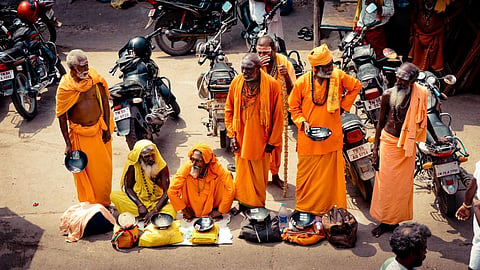
- Home
- न्यूजग्राम
- NewsGram USA
- India
- World
- Politics
- Entertainment
- Culture
- Lifestyle
- Economy
- Sports
- Sp. Coverage
- Misc.
- NewsGram Exclusive
- Jobs / Internships

By Tharini Ilanchezhian
Social service has been an undeniable part of the Hindu society. Religion and social work deeply believe that service to the needy is equivalent to the service to god. The idea of social welfare has existed in India for centuries but social work, as a profession in India emerged only by the 20th century. Similar to the other parts of the world, social work in India also sprouted with the idea of spreading love and compassion. The first ever means of social welfare was in the form of charity.
The belief of Hinduism and social work was that rendering service to the needy people was the utmost way to attain the blessings of god. The importance of charity has been highlighted in the Epics of Hinduism such as Vedas, Upanishads and Mahabharata. The practice of social work and welfare has been a part of the Hindu society right from the Vedic period.
A reference in the Rig Veda states that, "May the one who gives shine the most". The 'Yojnas' which was the practice of mass ritual, for which masses of people assembled together in the river banks with a spirit of dedication, shedding the personal desires, praying for the common welfare of all. The idea of 'Yajnashalas' which meant having classrooms where the disciples(men and women) were taught about the advantages of working together without any self-centric desires hinduism and social work.
The Vedic scriptures also emphasised on the communitarian society where the people live together like an extended family with a feeling of oneness. This form of collective living automatically facilitated the empowerment of the weak ones. Keeping aside the service and charity, social welfare has also traditionally aimed to protect the right and interests of an individual. Having this in mind, we can also find that the ancient rulers have prioritized the happiness of the subjects and maintained social order.
The epics such as Ramayana and Arthashastra have demonstrated this. This practice of social welfare and service progressed as there was a need of performing reforms in certain areas of some misguided traditional practices such as sati(practice of sacrificing widow women in their deceased husband's funeral pyre) and child marriage that turned out to be harmful to the human society. There came the organisations that played an important role in constructing a healthy society. Raja Ram Mohan Roy's Brahmo Samaj, Ramkrishna Mission, Indian Social Conference and Arya Samaj. These organisations sowed the seed of religious as well as social reforms for the collective welfare of people.
As the ancient Hindu philosophy had a firm foot in the social welfare practices, it consequently gave rise to the contemporary social work practice that has a solid structure of professionalism. In the current day's context, the profession has gained a massive attention with numerous students across the country taking up the professional degrees in social work and entering the practice of Hinduism and social work.
The religious values and their impact on the profession may vary all over the globe. What remains intact is the core essence of Social work – WE RAISE BY HELPING EACH OTHER, which is also the most important teaching of the Hindu Dharma.
keywords: Hinduism and social work, Hindu, hinduism , hindu society.
